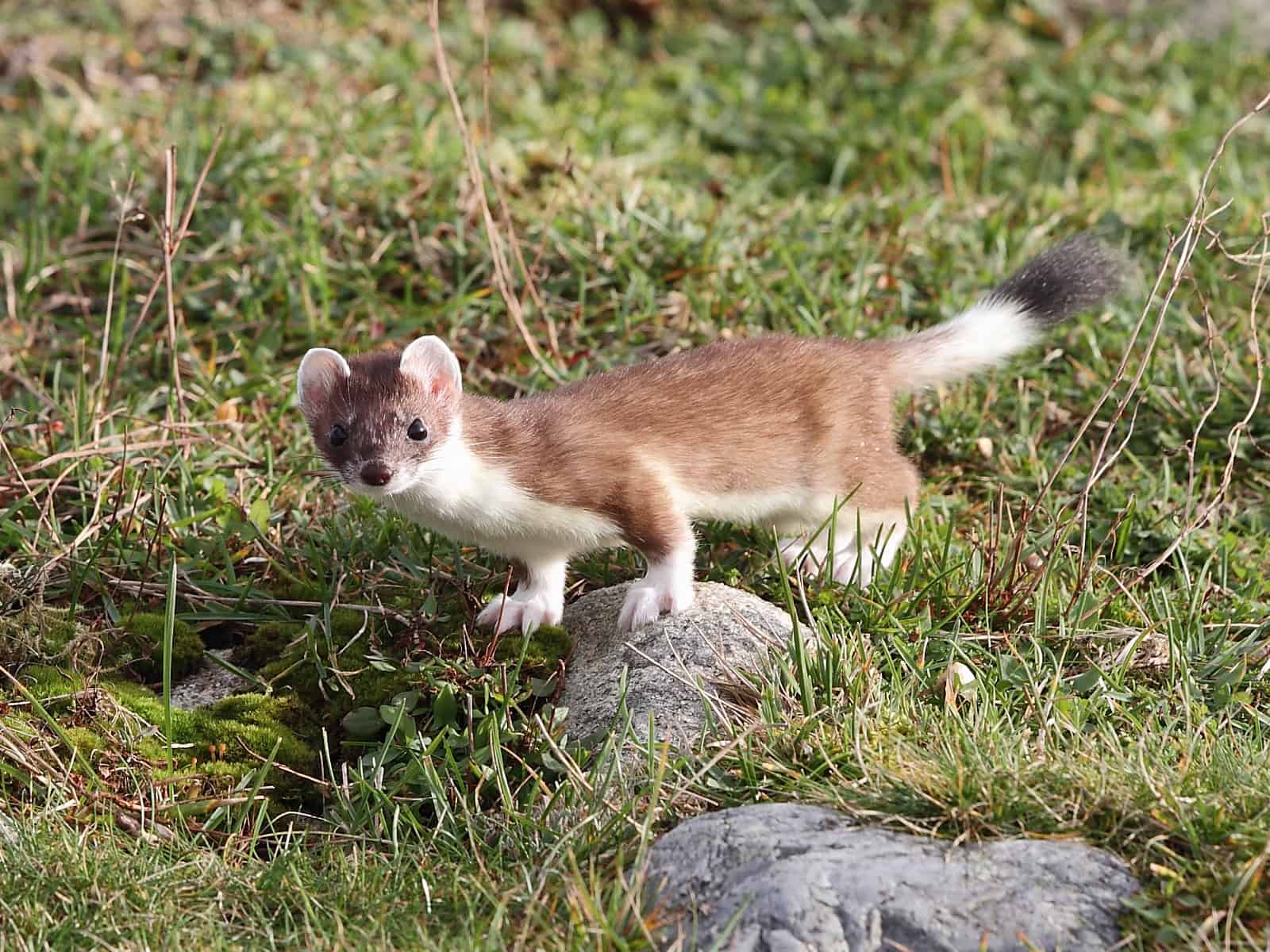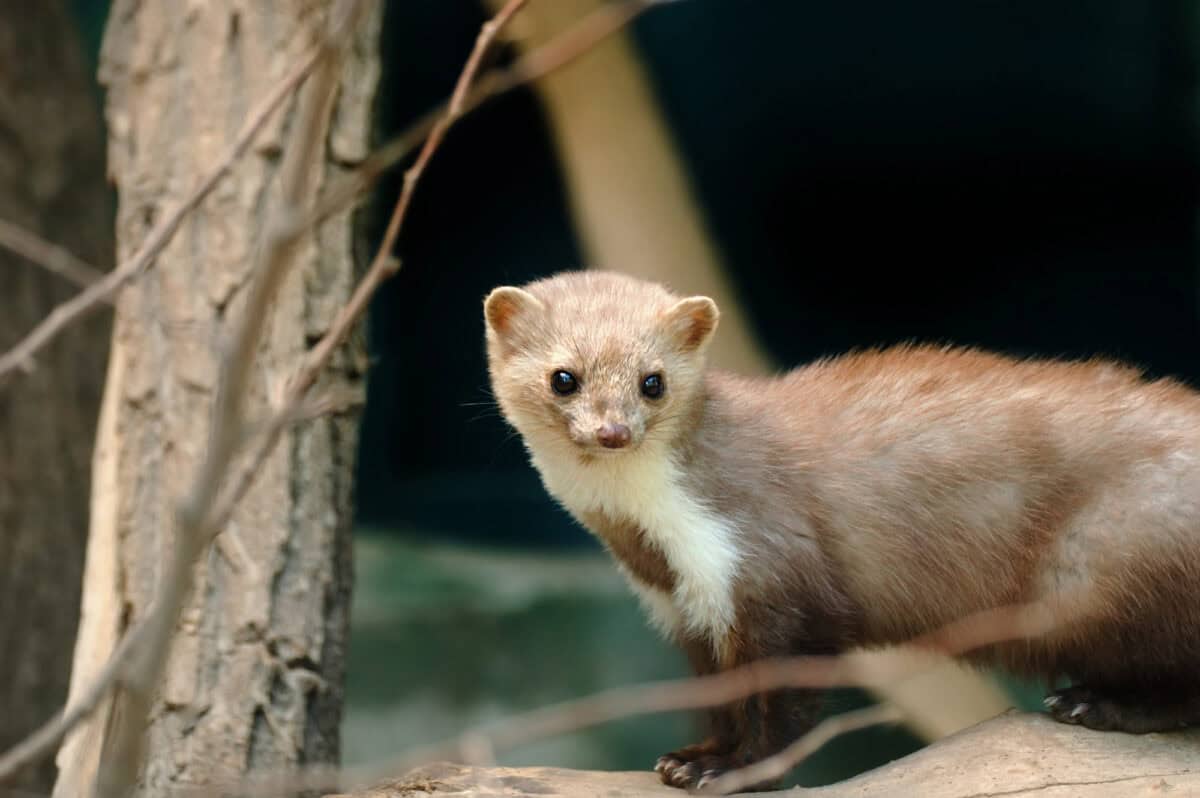Have you ever wished you could blend into your surroundings whenever life gets overwhelming? Some animals actually do just that, and not just for a magic trick — it’s pure survival. Across snowy tundras, dark forests, and even watery worlds, there are creatures whose coats, feathers, or even skin transform with the changing seasons. It’s as if nature gave them a backstage pass to the greatest costume party on Earth. From the arctic hares that vanish in white winters to sneaky reptiles that play hide and seek with predators, this list will leave you amazed at the wonders of animal adaptation. So, let’s take a journey through the wild and meet 16 incredible animals that change color with the seasons.
16. Arctic Fox

The Arctic fox is a master of disguise, switching its coat from brown or gray in summer to dazzling white in the winter. This color change is more than just a fashion statement—it’s a crucial way to avoid predators and sneak up on prey in the vast, snowy tundra. In summer, the darker fur helps them blend into the rocky, snow-free landscape, while the winter coat makes them disappear into a world of ice. This transformation isn’t instant; it takes weeks, triggered by changes in daylight. The Arctic fox’s incredible adaptability has helped it survive in one of the harshest environments on the planet. Imagine the confidence of being invisible when you need it most! These foxes really show us the art of seasonal survival.
15. Snowshoe Hare

The snowshoe hare is famous for its dramatic color change, trading a brown summer coat for a snowy white one in winter. This shift helps them avoid becoming dinner for hungry lynxes, owls, and other predators. As the days shorten and the temperature drops, their bodies respond by growing new, lighter fur. Sometimes, if the snow comes late or melts early, these hares can stick out awkwardly—a brown bunny in a sea of white, or vice versa—making them vulnerable. Their big feet, which act like snowshoes, are another cool adaptation for winter survival. The snowshoe hare’s seasonal color shift is a classic example of nature’s clever camouflage.
14. Willow Ptarmigan

The willow ptarmigan is a plump, chicken-like bird that lives in the frigid Arctic and subarctic. During summer, its feathers are mottled brown and tan, blending in with twigs and tundra plants. But when winter arrives, the ptarmigan sheds these feathers for a coat of bright white, camouflaging perfectly against snow. This transformation is so effective that predators like foxes and hawks often miss them entirely. The ptarmigan even changes its leg feathers, creating fluffy white boots for warmth. Watching these birds transform is like witnessing a living snowflake fluttering across the landscape. Willow ptarmigans truly show off nature’s seasonal wardrobe.
13. Stoat

Stoats, also known as ermines, are sleek little predators with a big secret: their fur changes from chocolate brown to pure white as winter sets in, except for their black-tipped tail. This snowy disguise helps them sneak up on unsuspecting prey and avoid being spotted by larger animals. In medieval times, ermine fur was so prized it became a symbol of royalty. Today, stoats continue to dazzle with their seasonal makeovers. Their transformation isn’t just about looks—it’s a brilliant survival strategy in places where snow covers the ground for months. With their quick movements and ever-changing coats, stoats are true masters of the seasonal switch.
12. Mountain Hare

Mountain hares live in high, cold places across Europe and Asia, and their color-changing trick helps them blend in all year round. In summer, their gray-brown fur matches the rocky hillsides and heath, but as winter approaches, their coat turns white. This camouflage is essential for dodging predators like golden eagles and foxes. The change isn’t just for snow—mountain hares living in areas with less snow may only partially turn white. It’s a delicate dance with the environment, showing just how finely tuned these animals are to the rhythms of the seasons. Seeing a mountain hare leap across the snow is like watching a ghostly blur vanish into thin air.
11. Peary Caribou

The Peary caribou is the smallest and palest of all caribou, living in the icy Canadian Arctic. In summer, their fur is a silvery-gray, blending in with the tundra’s muted colors. But come winter, their coat turns almost entirely white, making them incredibly hard to spot against the snow. This transformation isn’t just for show—it helps them avoid wolves and polar bears, their main predators. The Peary caribou’s seasonal color change is a gorgeous example of how even large animals can use camouflage to survive in extreme conditions. Their peaceful, ghostly presence on the tundra is a sight few people ever get to see.
10. Japanese Weasel

The Japanese weasel is an elusive little predator found in the forests and mountains of Japan. During the warmer months, its fur is a rusty orange-brown, helping it blend into the leaf-littered forest floor. But as winter approaches and snow blankets the ground, the weasel’s coat turns pale, often white or cream, making it nearly invisible. This change helps it sneak up on mice and birds while avoiding hungry hawks. The Japanese weasel’s transformation is a testament to nature’s adaptability, proving that even small creatures can pull off big tricks when it comes to survival.
9. Long Tailed Weasel

The long-tailed weasel is a slender hunter found across North America. Its summer coat is a warm brown, but when winter rolls in, it molts to a bright white except for its black tail tip. This seasonal camouflage helps it ambush prey like voles and rabbits while staying hidden from coyotes and owls. Not all long-tailed weasels change color—those living in warmer areas may stay brown year-round. But in snowy regions, their winter white is a lifesaver. Watching a long-tailed weasel dart through the snow is like catching a glimpse of a living shadow.
8. Collared Lemming

Collared lemmings are tiny rodents that live in the Arctic tundra, and they’re one of the few rodents that change color with the season. In summer, their fur is grayish-brown, but as temperatures drop, they grow a thick white coat to blend in with the snow. This transformation isn’t just about camouflage—it also helps them stay warm in bitter cold. Collared lemmings are a favorite snack for snowy owls and arctic foxes, so staying hidden is a matter of life and death. Their seasonal color change is a small but mighty example of adaptation in action.
7. Rock Ptarmigan

The rock ptarmigan lives in harsh, rocky landscapes where staying hidden is crucial. In summer, its feathers are speckled brown and gray, matching the stones and scrub. But in winter, the bird molts to a stunning white, sometimes with a few black markings. This seasonal transformation helps rock ptarmigans avoid eagles, foxes, and other predators. Even their eyes and beak are partially concealed by feathers, making them even harder to spot. The rock ptarmigan’s color change is so effective that hikers sometimes nearly step on them before realizing they’re there.
6. Siberian Hamster

The Siberian hamster, also known as the winter white dwarf hamster, is a tiny rodent with a big secret. In the wild, as winter approaches, its gray-brown fur turns white, helping it hide from predators in snowy fields. This change is triggered by the length of daylight rather than temperature. Pet Siberian hamsters sometimes keep their summer color all year because indoor lighting confuses their natural rhythms. In the wild, though, their transformation is a magical reminder of how even the smallest animals can put on a winter coat worthy of a fairy tale.
5. Alpine Marmot

The alpine marmot is a chunky ground squirrel found in the mountains of Europe. While not all populations change color, those living in snowy areas grow thicker, paler coats in winter, sometimes taking on a frosty hue. Their summer fur is a mix of brown, gray, and gold, blending in with rocks and grass. The change is subtle compared to some animals, but it helps them avoid eagles and foxes when they emerge from their burrows in spring. Alpine marmots remind us that sometimes, blending in means just a touch more gray or white—enough to disappear into a snowy hillside.
4. American Ermine

The American ermine, or short-tailed weasel, is a small but fierce hunter. In summer, its fur is chestnut brown, but as winter arrives, it becomes pure white with a black-tipped tail. This transformation allows it to stay hidden as it hunts mice and voles beneath the snow. The ermine’s white coat made it a symbol of purity and luxury in medieval Europe, often used to trim royal robes. Today, this seasonal shift is still a marvel of nature, helping the ermine survive in the icy wilds of North America.
3. Pacific Tree Frog

The Pacific tree frog is a tiny amphibian with a surprising ability: it can change color with the seasons, though not as dramatically as mammals or birds. In summer, these frogs are usually bright green, blending in with leaves and grass. During colder, drier months, they may turn brown or gray to match dead foliage and bark. This color shift helps them avoid predators like birds and snakes. Pacific tree frogs also change color in response to humidity and temperature, making them true chameleons of the amphibian world. Their subtle seasonal transformation is a reminder that camouflage isn’t just for the Arctic.
2. Chameleon

Chameleons are world-famous for their color-changing abilities, but did you know some species adjust their colors with the seasons too? While most chameleons change color to communicate or regulate body temperature, a few, like the Malagasy chameleon, become brighter or duller depending on the time of year. This helps them blend into changing backgrounds as plants grow or die back. Seasonal color changes in chameleons aren’t as dramatic as in Arctic animals, but they’re just as fascinating. These reptiles prove that even in tropical forests, adaptation is a year-round affair.
1. European Mole

The European mole might seem like an odd addition, but some populations show a change in fur color as the seasons shift. In winter, their fur can become paler, helping them remain less visible when they occasionally surface in snowy areas. Most of the time, moles stay underground, but this subtle shift is enough to provide a little extra camouflage when they venture out. It’s a small but clever adaptation, and just another example of how animals fine-tune their appearance to the world around them.
Conclusion

The ability to change color with the seasons is one of nature’s most brilliant tricks, offering animals a blend of protection, warmth, and the upper hand in the constant dance between predator and prey. From the Arctic fox’s dazzling winter whites to the subtle shifts of the Pacific tree frog, these 16 animals remind us how creative and resourceful life can be. Their transformations are more than just survival—they’re a testament to nature’s endless imagination. Next time you’re out in nature, take a closer look. Who knows what hidden wonders you might spot, perfectly dressed for the season?
- Jurassic World Dominion Dinosaurs - August 9, 2025
- 11 Signs a Rhino Is About to Charge - August 9, 2025
- 10 Common Chicken Behaviors and What They Mean - August 9, 2025

